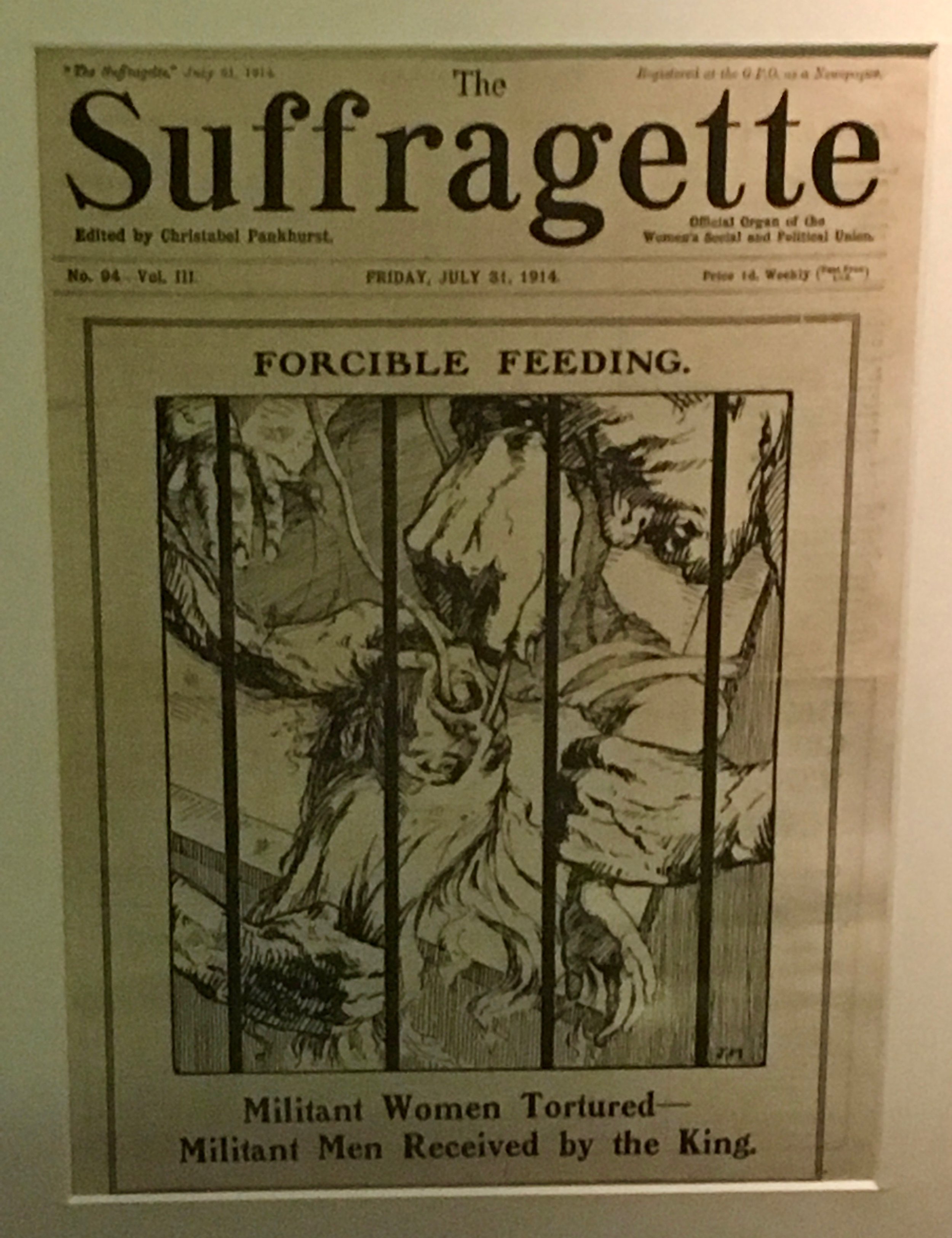Sassy Suffragettes: Votes for Women @ Museum of London
Covering every event in London’s history, from prehistoric flint tools, through the Black Death, Great Fire, all the way to the 2017 ‘FatBerg’, the Museum of London offers a pretty comprehensive overview. In amongst all of this history, and notably sitting alongside the outbreak of the First World War, the Suffragette movement is importantly and proudly highlighted.
In this milestone year, the museum has expanded its Suffragette display (n.b. it’s a “display”, not quite an “exhibition”) to mark the centenary of the Representation of the People Act, 1918. Alongside a few choice artefacts from the time, a new video installation discusses important events, key figures and the legacy of the women wearing white, purple and green.
The displays showcase iconic front-pages from ‘The Suffragette’, rosettes worn and won, and delicately embroidered banners that defined this handmade movement. These women embraced their domestic skills in order that they could escape such stereotypical roles. Alongside some quite harrowing photographs and violent-looking manacles, satirical and celebratory artefacts show that this was a war won with undeniable sass. Medals were given to women on hunger strike, glamorous jewellery was awarded in memory of prison stints, and subtle hammer-shaped pin badges were distributed to honour those women who made their mark as ‘window smashers’. These women were rewriting the rules, celebrating punishable acts, with sparkly jewellery.
The Women’s Social and Political Union party released board games and satirical children’s books, bringing the serious cause into the realm of the fun and the everyday. A highlight of which was an alphabet book in the museum’s display, open at page W:
“W’s the Washing, which woman must do,
Day in and day out & on polling day too.
If she wants a day off, you had better say “Bosh”
And tell her such fanciful notions won’t wash.”
More famously, the movement was defined by ‘Deeds, not Words’. As such, the video installation, newly commissioned for the Museum of London, discusses milestone moments in the campaign. This engaging history lesson comments upon Women’s Sunday, 1908: the day that saw seven large scale processions centre in on London’s Hyde Park, marking the scale of the movement. This peaceful protest gathered an unprecedented following, as ‘the procession was a new thing to London’, as was the infamous tricolour that became the sign of the party.[1]
Showing the diverse attempts of the protest movement, the next notable event mentioned is ‘Black Friday’; far from the modern, manic shopping associations inherited from across the pond, rather this signalled “the turning point of the campaign”. On this day in 1910, when the Conciliation Bill was refused by parliament, the women turned militant. The women only enacted violence against property, rather than people; contrastingly, the police were brutal to the female protestors, resulting in a PR storm. ‘The suffragettes were exposing that the government cared more about a pane of glass than a woman’s life […] or a woman’s political rights.’[2]
What stemmed from ‘Black Friday’, as the hammer badges and medals on display suggest, was a focus on individual acts of heroism, rather than mass movement for the cause. This can be noticed in the banners that line the museum enclave, triumphing the names of the legendary Pankhurst women.
As the Suffragette movement saw over a thousand women imprisoned for the cause, a male prison guard is interviewed for the video presentation. Unfortunately, he makes occasional comments that are a little jarring and out of sync with the celebratory and inspirational tone of the display. (Let’s just hope this comes from a place of ‘equal treatment for all’, rather than a directly anti-heroine sentiment, as he claims the suffragettes would have experienced no allowances in his prison.) But, above all, the voices involved in this latest display, alongside select exhibits and a powerful rendition of a marching song, all sing out with pride and admiration.
This miniature exhibition plays tribute to a vast, varied and valiant protest movement. Adopting techniques of peace and violence, satire, shouting and, above all, sisterhood, these women were proved to be unstoppable.
The Votes for Women display is free to visit at the Museum of London for the entirety of this centenary year. It may be small, but it’s a great jumping off point for further research, inspiration, or even just to say “yep, still relevant today!”.
Title image sourced via Museum of London








